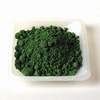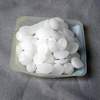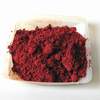| TA KIMIKA | |
|---|---|
| Chemical gallery | |
| To the gallery |
| Select substances by |
|---|
| TYPE |
| PICS by TYPE |
| ELEMENT (from periodic table) |
| CHEMICAL SIGN |
| FORMULA - NAME |
| How to contribute |
 A lot of students are sceptic to acknowledge that a few time is really needed to learn the rules with which atoms or groups of atoms bound together to give oxides, salts, hydroxides and the great variety of chemical compounds. This question should be seen in a different point of view: some students have a strictly personal dislike of chemistry. Regarding me I immediately liked chemistry and after the high school I tried to let it be always “alive” in my mind and the “chemical gallery” is an example of what I have just said.
A lot of students are sceptic to acknowledge that a few time is really needed to learn the rules with which atoms or groups of atoms bound together to give oxides, salts, hydroxides and the great variety of chemical compounds. This question should be seen in a different point of view: some students have a strictly personal dislike of chemistry. Regarding me I immediately liked chemistry and after the high school I tried to let it be always “alive” in my mind and the “chemical gallery” is an example of what I have just said.
Why did I produce such a work? Because when I was a secondary school student I always had the same questions after I had written a chemical formula to solve a problem given to me. What is the natural appearance like of the substances found in the exercises? This question was due first to curiosity and second to the fact that some “smart” minds decided that in the Italian High Schools with emphasis on the humanities any classes of chemistry laboratory are needed. Everything must be done theoretically, only on the black-board, instead of to have sometime the opportunity to see some compounds in the laboratory and to have in such a place the empirical proof that e.g. the redox chemistry reactions really exist.
 The chemical formula of a substance has inside an height synthesis level, but in the same time the secondary non-chemical characteristics, such as colour, sometime the specific stench, and other aspects, are lost. This things are not given by the formula, because the atoms and the way in which they are bind each other are important in chemistry. But fortunately for the painters of all the times not all the compounds are like the cooking salt and there are different kinds of white colours and grains...
The chemical formula of a substance has inside an height synthesis level, but in the same time the secondary non-chemical characteristics, such as colour, sometime the specific stench, and other aspects, are lost. This things are not given by the formula, because the atoms and the way in which they are bind each other are important in chemistry. But fortunately for the painters of all the times not all the compounds are like the cooking salt and there are different kinds of white colours and grains...
So, when I had the possibility to organize a chemistry laboratory and to see and use elements and compounds, from one hand I satisfied my curiosity, to the other I had the idea to realize this work under the thought that I shouldn't be the only one who wondered what is the real aspect like of each substance synthetically described by its chemical formula. It's known that the web is a very wide ocean, so mistakes are possible, but until now I didn't find a site with a same work on substances.
 With more or less eighty elements really available, the possible combinations to produce inorganic salts are a very large number even if we consider the limitation that not every compound we might think about it can be purchased. Thus only a little number of substances (elements and compounds) are shown in this gallery, only the reagents of our chemistry laboratory. But this number can be increased with the important contributes of all of those who work in a chemistry laboratory and want to give me their free helping hand.
With more or less eighty elements really available, the possible combinations to produce inorganic salts are a very large number even if we consider the limitation that not every compound we might think about it can be purchased. Thus only a little number of substances (elements and compounds) are shown in this gallery, only the reagents of our chemistry laboratory. But this number can be increased with the important contributes of all of those who work in a chemistry laboratory and want to give me their free helping hand.